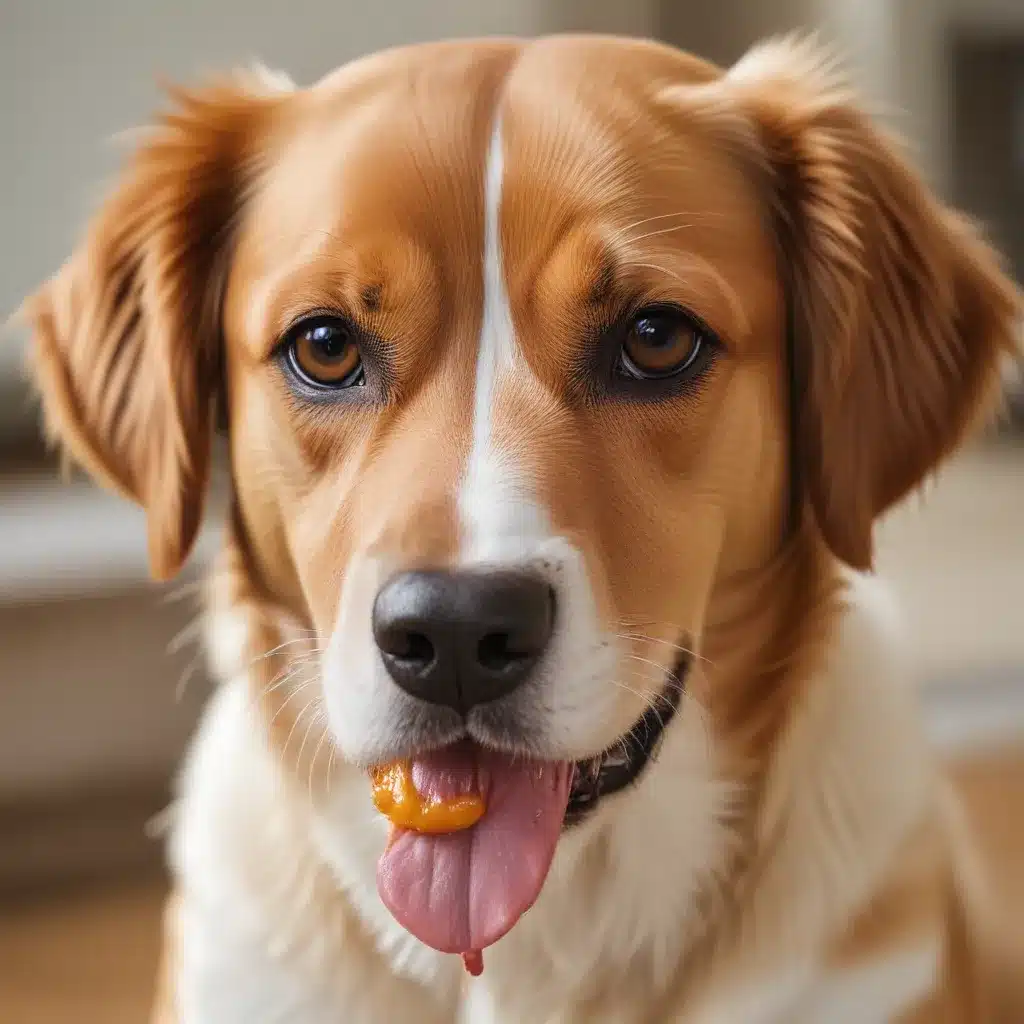
A Delicate Situation: Navigating the Aftermath of Your Pup’s Curious Nibble
Oh, the trials and tribulations of being a dog parent! If you’re anything like me, you’ve had your fair share of heart-stopping moments when your furry friend decides to indulge in something they really shouldn’t. Whether it’s scrounging through the trash, snatching a tempting treat from the counter, or discovering a new chew toy in the form of your favorite pair of slippers, our canine companions have a knack for finding trouble.
But fear not, fellow dog lovers! I’m here to share my experience and guide you through the process of dealing with those inevitable “oops” moments when your pup gets a little too curious for their own good. After all, as they say, an ounce of prevention is worth a pound of cure, and I’m here to make sure you’re equipped with the knowledge to keep your four-legged family member safe and sound.
Staying Calm: The Key to Handling the Situation
Now, I know it can be easy to panic when you realize your dog has ingested something they shouldn’t have. Heck, the first time it happened to me, I was a wreck! But let me tell you, the best thing you can do in those moments is to take a deep breath and stay as calm as possible. Trust me, your pup can sense your anxiety, and that’s only going to make the situation worse.
Instead, approach the situation with a clear head and a focused mind. The first and most important step is to remove whatever it is your dog is trying to eat from their mouth. This could be anything from a wrapper to a small toy, and it’s crucial that you act quickly to prevent them from swallowing it. Once you’ve secured the offending item, take a moment to assess the situation and determine how much your dog may have consumed.
Assessing the Damage: Recognizing the Symptoms
Now, the severity of the situation is going to depend on what your dog has eaten. Some items, like certain types of plastic or packaging, can be relatively harmless if they’re not consumed in large quantities. But others, like chocolate, onions, or certain medications, can be downright toxic to our canine companions.
As you’re assessing the situation, keep an eye out for any concerning symptoms that may arise. These can include vomiting, diarrhea, lethargy, excessive panting, or even trembling. If you notice any of these signs, it’s time to take action and get your pup to the vet as soon as possible.
Calling in the Experts: Enlisting the Help of Your Veterinarian
Once you’ve determined what your dog has eaten and are keeping a close eye on their condition, the next step is to get in touch with your veterinarian. Be prepared to provide them with as much information as possible, including what your dog consumed, how much they may have eaten, and any symptoms you’ve observed.
Your vet will be able to provide you with guidance on the best course of action, which may include inducing vomiting, administering activated charcoal to absorb the toxin, or even performing surgery to remove a foreign object. Remember, time is of the essence, so don’t hesitate to seek professional help, even if it’s after hours.
Preventing Future Mishaps: Proactive Measures for a Safer Home
As the saying goes, an ounce of prevention is worth a pound of cure, and when it comes to our canine companions, this couldn’t be more true. The best way to avoid these types of situations is to take proactive measures to ensure your home is a safe and secure environment for your furry friend.
Start by identifying and securing any potential hazards, such as cleaning products, medications, or even certain human foods that can be toxic to dogs. Keep these items well out of reach, and consider investing in some pet-proof storage solutions to give you an extra layer of protection.
It’s also a good idea to teach your dog the “leave it” or “drop it” command, which can be a lifesaver in those moments when they’ve gotten hold of something they shouldn’t. Consistency is key here, so be sure to practice these commands regularly, and don’t be afraid to enlist the help of a professional trainer if you need some extra guidance.
Remember, our canine companions are curious creatures by nature, and it’s our job as responsible pet parents to keep them safe and out of harm’s way. By staying vigilant, acting quickly, and always having a plan in place, you can help ensure that your furry friend stays happy, healthy, and, most importantly, alive.
So, let’s raise a metaphorical glass (or maybe a chew toy) to the joys and challenges of dog ownership. With a little bit of preparation and a whole lot of love, we can navigate even the most delicate of situations and keep our beloved pups safe and sound. After all, they’re counting on us to be their heroes, and I don’t know about you, but I’m more than happy to take on that responsibility.
Helpful Resources
If you’re looking for more information on keeping your dog safe from harmful substances, be sure to check out these helpful resources:
IHaveDogs.com – Your one-stop-shop for all things dog-related, including training tips, product recommendations, and more.
ASPCA Animal Poison Control – A 24/7 hotline staffed by experienced veterinary professionals who can provide guidance in emergency situations.
Pet Poison Helpline – Another valuable resource for pet owners, offering expert advice and support in the event of a potential poisoning.
Remember, when it comes to the health and safety of our furry friends, knowledge is power. So, let’s stay informed, stay vigilant, and keep our pups happy, healthy, and (most importantly) alive!

